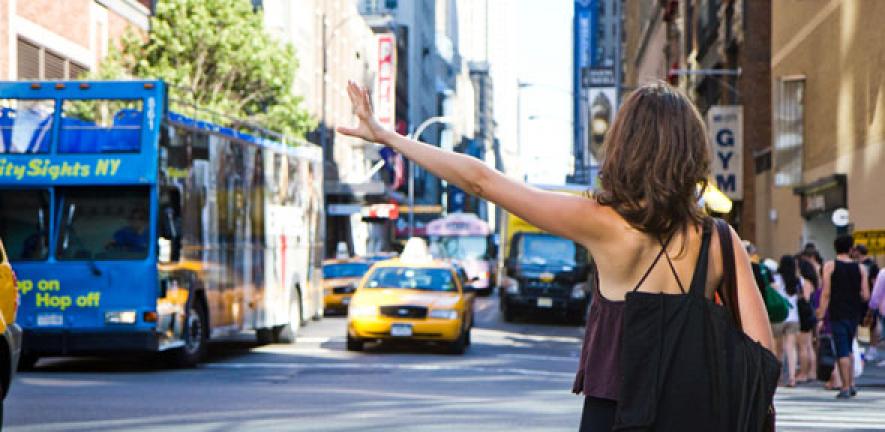
Christian Hampel (Cambridge Judge Business School) discusses Thomas Cook travel agency's battle with Victorian Britain's status quo.
Christian Hampel (Cambridge Judge Business School) discusses Thomas Cook travel agency's battle with Victorian Britain's status quo.
App-based ride company Uber has been battling the “establishment” around the world, from traditional black taxi drivers in London to regulators in Australia. But Uber is far from the first upstart travel company to rock the status quo. More than 150 years ago, in Victorian Britain, the Thomas Cook travel agency faced vilification before skilfully winning over its critics.
So how did the original travel disruptor pull it off? The circumstances behind the rise of both companies are vastly different, but there are lessons in the way a former cabinet maker and temperance preacher navigated his company from outcast to mainstream in about 15 years, not only by dulling criticism, but by actually winning the public over to his side.
Having started from modest beginnings in the mid-nineteenth century, Thomas Cook’s travel agency brought continental European travel to the middle classes through what we now call package holidays. This enraged the elite, who indulged in “Grand Tours” of European capitals that often lasted months, and who called themselves “travellers” rather than mere “tourists”.
Leading newspapers condemned Thomas Cook as an “unscrupulous man” and branded his customers “barbarian hordes”. They were cheered on by an upper crust who worried about pristine attractions being overrun by people who were, according to Blackwood’s Magazine, “low-bred, vulgar and ridiculous”.
Fighting Fear
Thomas Cook refused to be vilified, and effectively fought back against this scaremongering by defending both his business model and his customers in a manner that was steely but not abrasive. He was unapologetic about his activities and set out to show that they were far from harmful to British society.
Cook used his monthly journal, The Excursionist, to depict his opponents as a “misguided minority” who lacked “genuine nobility” because they sought to deny other people a form of cultural enrichment. He said his tours helped to improve peaceful global relations through closer contact among nations. And Cook argued that his tours allowed respected but poorly paid professions, such as clergy and teachers, to travel abroad:
There is no class of men to whom a good tour could be more beneficial than to hard-working ministers.
He also adopted some of the practices of the “Grand Tours” – including offering greater freedom to customers by allowing them to check into hotels individually rather than as a group.
Steadily and rapidly, the “stigma” and bad press attached to Thomas Cook and his customers evaporated. In return, Cook helped the media by providing valuable news tips – gleaned from his customers – about countries that seem so close now, but were then so far away.
So just a decade after the Daily News condemned Cook’s “swarm of followers” and “barbarian hordes”, the newspaper batted down rumours that the Danube had been closed to passenger traffic by reporting:
Messrs. Thomas Cook and Son have received the following telegraphic reply: ‘Danube route open. No fear of its being closed.’
Before long, newspapers began praising Cook for offering “invaluable services” and joining the ranks of public benefactors.
Turning Enemies into Allies
Today’s disruptors, of course, don’t face identical challenges to those handled so deftly by the arriviste Thomas Cook. Not all of Cook’s tactics will transfer successfully to the internet age. Yet we’ve already seen some recent moves that have echoes of those used by Cook a century and a half ago.
This month, Uber appointed former EU competition commissioner Neelie Kroes as an advisor to work more closely with governments around the world to advance its arguments. Thomas Cook, sought support from high places, too; his son John even organised a package tour of the Holy Land for Prince Edward and Prince George.
In another echo of Cook, Uber argues that its service brings simplicity and democratisation to a highly structured system that served a privileged few. Previously, a limited number of licensed taxi drivers and people lucky enough to find a cab in a downpour could prosper; now many drivers and customers can, in theory, benefit from more choice and competition. Like Cook, Uber could try to be more collaborative, too; to present its services as an innovative alternative to licensed taxis rather than their replacement. An Uber that is part of a complementary taxi ecosystem will combat the image that it presents a mortal threat to the black cabs of London or the yellow taxis of New York.
Thomas Cook is now listed on the London Stock Exchange, and is part of the FTSE 250 index as one of Britain’s largest companies. It has become part of the establishment it once challenged. In the end, that kind of success boils down to staying power. After successfully shedding its stigma, Thomas Cook was able to show good long-term value for money, and Uber will need to do the same.
Uber already has taken some steps towards fostering a gentler image, using its ride sharing service to donate clothes for refugees, and suspending surge pricing during a big US snowstorm early this year. If the stigma is to be entirely removed, Uber probably needs to offer a convincing answer to criticism of that system, which allows fares to skyrocket during periods of peak demand in what some see as a grave exploitation of customers.
Just seven years after it was founded in San Francisco, Uber’s history is still being written. But there is an intriguing parallel with the journey of Thomas Cook and his once-upstart travel agency, and it is now playing out with a new high-profile disruptor in a new century.
Christian Hampel, PhD candidate, University of Cambridge
This article was originally published on The Conversation. Read the original article.
The opinions expressed in this article are those of the individual author(s) and do not represent the views of the University of Cambridge.

The text in this work is licensed under a Creative Commons Attribution-NonCommercial-ShareAlike 4.0 International License. Images, including our videos, are Copyright ©University of Cambridge and licensors/contributors as identified. All rights reserved. We make our image and video content available in a number of ways – as here, on our main website under its Terms and conditions, and on a range of channels including social media that permit your use and sharing of our content under their respective Terms.
For image use please see separate credits above.




